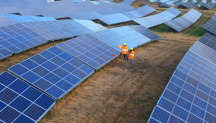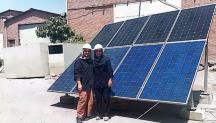

-
-
Ferroukhi, R., X.G. Casals and B. Parajuli (2020) Measuring the socio-economics of transition: Focus on jobs, International Renewable Energy Agency, Abu Dhabi
Copied
Measuring the socio-economics of transition: Focus on jobs
Well-crafted deployment, integrating and enabling policies could create millions of new jobs. This report outlines the evolving global and regional distribution of energy employment.
Newsletter
Key Facts
Well-crafted deployment, integrating and enabling policies for renewable energy could create millions of new jobs as countries around the world pursue sustainable long-term energy solutions. This Staff Technical Paper published by the International Renewable Energy Agency (IRENA) outlines the evolving global and regional distribution of jobs in renewables, energy as a whole, and economy-wide.
A special in-focus segment illuminates job figures for key technologies and major occupational groups along different segments of the value chain.
Among the highlights:
Coherent policy-making, adjusted for the economic and social context of each region, can deliver on climate and energy goals effectively and fairly.
Accelerated uptake of renewables could boost total energy jobs to 100 million by 2050.
Energy efficiency jobs would reach 21 million, with 21% higher growth than current plans indicate.
Jobs in renewables could reach 42 million by 2050, some 62% more than under current plans.
Asia could account for 64% of jobs in renewables by 2050, the Americas 15%, and Europe 10%.
In terms of all energy jobs, Asia could have over 60% by 2050, the Americas 13%, and Europe 12%.
Despite the largely positive impact of the transition, governments will have to address some inevitable misalignments along the way.
A special in-focus segment illuminates job figures for key technologies and major occupational groups along different segments of the value chain.
Among the highlights:
Coherent policy-making, adjusted for the economic and social context of each region, can deliver on climate and energy goals effectively and fairly.
Accelerated uptake of renewables could boost total energy jobs to 100 million by 2050.
Energy efficiency jobs would reach 21 million, with 21% higher growth than current plans indicate.
Jobs in renewables could reach 42 million by 2050, some 62% more than under current plans.
Asia could account for 64% of jobs in renewables by 2050, the Americas 15%, and Europe 10%.
In terms of all energy jobs, Asia could have over 60% by 2050, the Americas 13%, and Europe 12%.
Despite the largely positive impact of the transition, governments will have to address some inevitable misalignments along the way.




